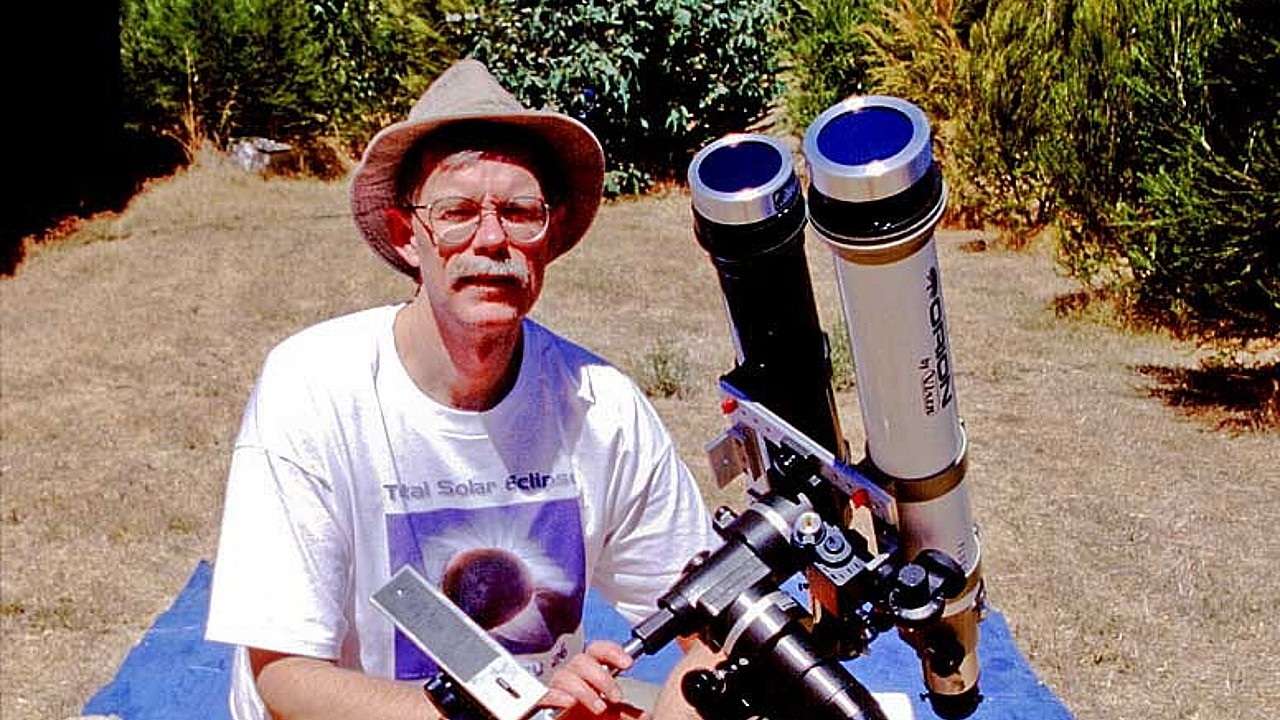What is the Planck time?
The almost impossibly brief Planck time has been known since the 19th century. Originally dismissed as a mere curiosity, it may hold the key to understanding the universe.

The Planck time is an incredibly small interval of time that emerges naturally from a few basic quantities in theoretical physics. When it was discovered by Max Planck at the end of the 19th century, it seemed to be no more than a scientific curiosity. But today it plays a tantalizing role in our understanding of the Big Bang and the search for a theory of quantum gravity.
Here’s a summary of everything we know about the Planck time: where it came from, what it is, and what it might reveal about the way the universe works.
Related: How does time work?
Planck time definition
The Planck time was first described in a scientific paper written by Planck in 1899, in a section called “Natural Measurement Units” (the paper, in German, can be found at the Biodiversity Heritage Library). In everyday use, measurement units are no big deal. We use whatever is convenient – ounces or tons for mass, miles or inches for distance, minutes or days for time. Scientists tend to use SI units of kilograms, meters and seconds, because they simplify complex calculations – but only up to a point. The math can still get tortuously complicated.
In Newton’s equation for the force of gravity, for example, the gravitational constant G has brain-twisting units of “cubic meters per kilogram per second squared,” according to Swinburne University. In these units, G – which is one of the most fundamental numbers in the universe – has the arbitrary-looking value of 0.0000000000667. Planck wanted to find a more “natural” set of units in which G, and similar fundamental constants, are exactly equal to 1.
Related: What is a light-year?
Max Planck may not be a household name, but he gave the world a household phrase: quantum theory. According to the European Space Agency, which named its Planck spacecraft after him, the breakthrough came in 1900 when he discovered that energy can only be transmitted in small packets of prescribed size, which he termed “quanta.” This was decades before the likes of Werner Heisenberg and Erwin Schrödinger discovered all the quantum weirdness we’re familiar with today, but none of that would have been possible if Planck hadn’t paved the way first. As such, he’s rightly described as the father of quantum physics.
The second parameter Planck chose was the speed of light c, in meters per second. This was known to be an important constant even in 1899, despite the fact that Einstein’s theory of relativity, with which it’s closely associated, still lay several years in the future. The third parameter was a brand-new constant Planck himself had just discovered, now known simply as Planck’s constant. Usually represented by the letter h, it’s the ratio of a photon's energy to its frequency, with units of kilograms multiplied square meters per second.
Taking these three constants as his starting point, Planck was able to find a new set of measurement units in which they’re all precisely equal to one. These basic units are referred to as the Planck mass, Planck length and Planck time. Our particular interest here is in the last of these, but there’s a close relationship between the last two: the Planck length is equal to the Planck time multiplied by the speed of light.
The Planck time equation
Planck time in seconds
The U.S. National Institute for Standards and Technology gives the value of the Planck time as 5.391247 × 10^-44 seconds. In other sources, including Planck’s original paper, you may find a slightly bigger value around 1.35 × 10^-43 seconds. As explained on Eric Weisstein’s World of Physics site, this is due to the use of two different versions of Planck’s constant. The larger value uses Planck’s original quantity, h, while the smaller, more common value uses a parameter called h-bar, which is h divided by 2 pi.
Whichever value is used, the result is a time interval that is unimaginably tiny in the context of everyday experience. A nanosecond, often used colloquially to mean “a very short time,” is 0.000000001 seconds, with 8 zeros between the decimal point and the first significant figure. The Planck time has no fewer than 43 zeroes. It’s the time it takes light to travel one Planck length, which is around a hundredth of a millionth of a trillionth of the diameter of a proton, according to Symmetry magazine.
Is Planck time real?
Because the Planck time is so impractically small, it was largely ignored by scientists prior to the 1950s, according to K. A. Tomilin of the Moscow Institute for the History of Science and Technology. At best it was considered an interesting curiosity with no real physical significance. Then, when physicists started looking for a “theory of everything” that would encompass both gravity and quantum mechanics, they realized that the Planck time might have enormous significance after all.
The key lies in the fact that the Planck time, along with the other Planck units, incorporates both the gravitational constant G and Planck’s constant h, which is central to quantum theory. Inadvertently, back in 1899, Planck had come up with a formula that straddled both halves of modern physics, long before anyone had started looking for such a connection.
Planck’s original motivation in devising his measurement system was to define a set of units that weren’t Earth-centric, in the way our units usually are. That’s even true of the so-called “astronomical unit,” which is the average distance from the Earth to the Sun, according to the University of Surrey, or the light year, which is the distance light travels in the time it takes the Earth to orbit once around the Sun. In contrast, Planck’s units – as impractical as they are for everyday use – have no such anthropocentric connections. As Planck himself put it, according to Don Lincoln of Fermilab, his units “necessarily retain their meaning for all times and for all civilizations, even extraterrestrial and non-human ones.”
For any given mass, Einstein’s theory of gravity – general relativity – gives a characteristic length scale called the Schwarzschild radius. But quantum theory has its own length scale for that mass, which is termed the Compton wavelength, according to Georgia State University. So is there any mass for which the Schwarzschild radius is exactly equal to the Compton wavelength? It turns out there is – and it’s the Planck mass, for which those two parameters, one from quantum theory and one from general relativity, both equal the Planck length.
Is this just a coincidence, or does it mean that gravitational and quantum effects really do start to overlap at the Planck scale?
Some scientists, such as Diego Meschini of Jyvaskyla University in Finland, remain skeptical, but the general consensus is that Planck units really do play a key role in connecting these two areas of physics. One possibility is that spacetime itself is quantized at the level of a Planck length and Planck time. If this is true, then the fabric of spacetime, when looked at on that scale, would appear “chunky” rather than smoothly continuous.
What occurred at the Planck time?

In the universe we see today, there are four fundamental forces: gravity, electromagnetism and the strong and weak nuclear forces. But as we look backward in time through the first moments after the Big Bang, the universe becomes so hot and dense that these forces gradually merge into each other. It all happened very quickly; from ten microseconds onward, the four forces looked just as they do today. Before that, however, there was no distinction between the electromagnetic and weak forces – and prior to 10^-36 seconds, these were joined by the strong force as well.
At this point, gravity was still a separate force – and based on current theories, we can’t look back any further in time than this. But it’s widely believed that, given a better understanding of quantum gravity, we’d find that prior to the Planck time gravity was also merged into the other forces. It was only at the Planck time, around 5 × 10^-44 seconds after the Big Bang, that gravity became the separate force we see today.
Additional resources
- Watch this Fermilab video about Planck units
- Discover what space looks like on the Planck scale
- Read about an experiment to access Planck-scale physics
Join our Space Forums to keep talking space on the latest missions, night sky and more! And if you have a news tip, correction or comment, let us know at: community@space.com.
Get the Space.com Newsletter
Breaking space news, the latest updates on rocket launches, skywatching events and more!

Andrew May holds a Ph.D. in astrophysics from Manchester University, U.K. For 30 years, he worked in the academic, government and private sectors, before becoming a science writer where he has written for Fortean Times, How It Works, All About Space, BBC Science Focus, among others. He has also written a selection of books including Cosmic Impact and Astrobiology: The Search for Life Elsewhere in the Universe, published by Icon Books.
